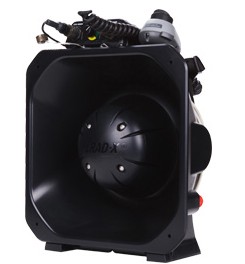by Stephen Bryen
Presented by SDB Partners LLC
Any parent who sends a child to college worries about the child’s security. From Ivy League schools to state universities to community colleges, danger lurks for students. The surprisingly high level of risk has been amply documented by The Daily Beast in figuring the 50 worst campuses for crime. [http://www.thedailybeast.com/articles/2010/09/14/most-dangerous-college-campuses-ranked.html ]
Crimes at colleges range from assaults, robberies burglaries, car thefts and car jacking, rapes to murder.
College security and local law enforcement are strongly challenged to respond rapidly in such emergencies.
Many campuses have put in security cameras and emergency call kiosks to try and offer some support to students, particularly in far off areas or in parking lots where many of these crimes occur.
Students rarely carry much money, but they have with them items in high demand such as high end cell phones, laptop computers and tablets like the Ipad, music players and the like. They also have credit cards and documents that are valuable to thieves. Women particularly risk physical assault and rape.
Total protection for students is, of course, impossible. But technology can help if it is used correctly.
The problem with conventional sensors is two fold. First, the victim has to be able to activate the sensor. When a student is accosted, it is a high moment of danger. A woman might reach into her pocket or backpack to grab her cellphone and try and call for help, but she may not have time or the cell phone might be ripped out of her hands by the assailant. She may try and run to the emergency Kiosk to try and summon help, but she might not be able to get to it in time. Surveillance cameras may see what is going on, but smart thieves know where the cameras are and avoid them. And even if the event is caught on camera, the security guards trying to monitor multiple video streams may miss the event.
There are two promising technologies that can help a lot to reduce physical assaults. The first is a gunshot and anomaly detector or GAD. The second is a Long range Acoustic Device or LRAD. Put together these offer a next generation level of protection to students.

GAD With High Powered Lighting
A gunshot anomaly detector can respond to a gunshot, to an explosion, or to a scream for help (or even just a scream). Using a neural network technology to sort out sounds and classify them, the next generation gunshot and anomaly detector not only immediately sounds an alarm when an event occurs, but thanks to its integrated camera it can zoom in on the source in less than a second and stream video immediately to police and security personnel.
The GAD has significant range and can be mounted on buildings, walls or lamp posts or towers. It solves a major surveillance problem which is recognition by monitors that a security event is in progress. The GAD responds automatically and autonomously, flashes a red alert, pumps video to police cruisers and foot patrols, and accurately shows the exact location of the incident. The best GAD system is produced by Safety Dynamics, a firm based in Tuscon, Arizona and represented by SDB Partners LLC. (See contact information below.)
The GAD’s capability can be complimented by the LRAD. The LRAD is best understood as a very powerful acoustic device that can send broadcast at high amplitude any kind of message, warning, siren sound or whatever else is programmed into it. Originally LRAD was designed as a non-lethal warning system for ships but today it is also a useful law enforcement tool. Installed in combination with a GAD, the LRAD can immediately blast messages and siren sounds that will frighten off an attacker. The LRAD is manufactured by the LRAD Corporation in San Diego, California (www.lradx.com).

Small LRAD Unit
The GAD-LRAD combination are affordable solutions that can help reduce campus crime and increase the safety and security of campus facilities.
For more information contact James Swanson at SDB Partners LLC. Telephone 202-540-0692 Email james@sdb-partners.com
